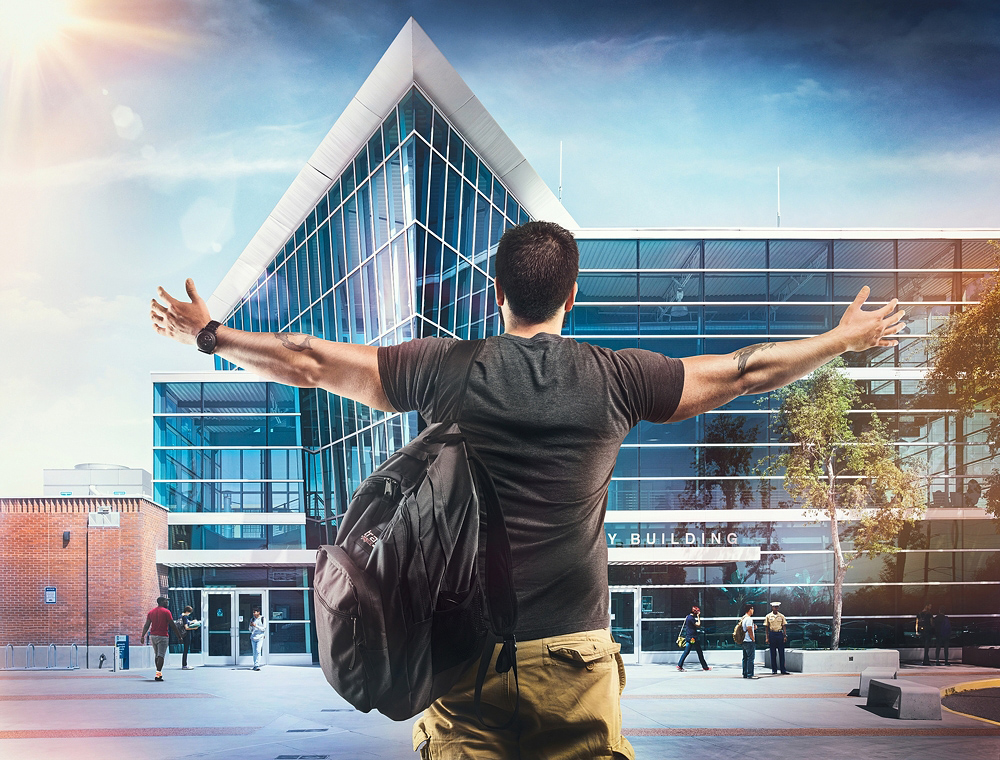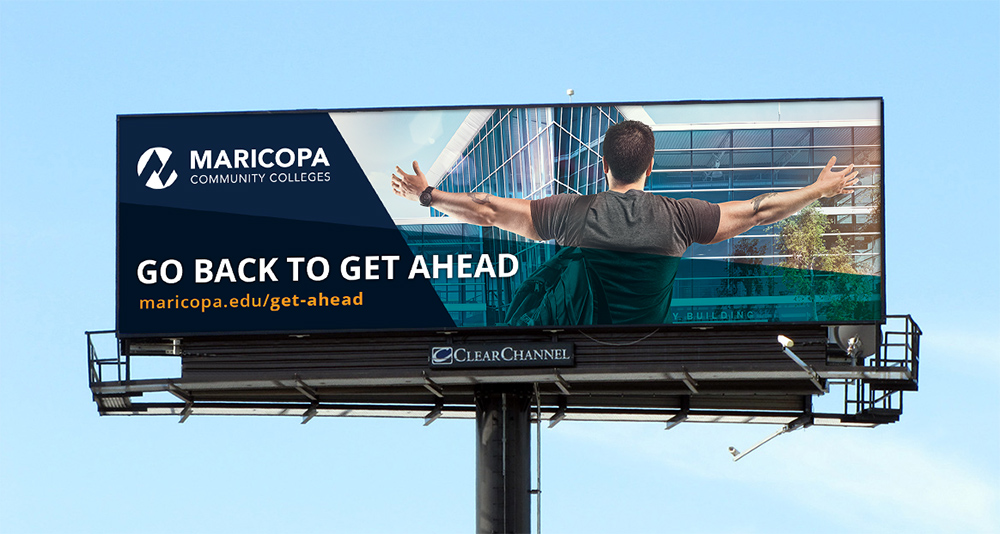Living and working in Arizona guarantees two things: 1) a warm comfortable winter 2) a warm uncomfortable summer. The photoshoot featured in today’s blog took place in the latter.

Last summer I received a phone call from my friend Nick, a Creative Director from the client side that I had worked with when creating the parallax Superbowl commercial a couple years ago. He had since moved on to work for Maricopa Community Colleges and was calling to do another photoshoot. It was June, and part of me hoped that he was being proactive and planning severely ahead, however, this was not the case. MCC was in need of a large campaign and would need to shoot it within the month.

Anyone who has been so lucky to visit Arizona in the summer knows that in the summers, our temperature doesn’t drop below 100, even at night. With this campaign we would be shooting outside in the middle of the day, not the most comfortable of temperatures (nor the nicest light). However, it was the time when the students were on the campuses that we’d be photographing. Now you might wonder, why not hire models and extras and have them on location anytime needed? This campaign was about being real and truthful to the viewer. The subjects in the images are students of the school in the clothes that they showed up in that day.

While we were not able to manipulate the students/subjects of the photos, we were able to control how long they had to stand in the elements. Now you may ask, “how bad was it really?” Here is my phone on one of the days prior to the photoshoot. If you are wondering, yes, that 120 degree temperature was in the shade… standing in the sun was much warmer. Also, yes, I was drinking coffee in the afternoon while it was 120 outside.

Where this photoshoot gets even trickier is not just the health factors of working in the heat, but the gear factors. I was using a Hasselblad H6D-100c for this photoshoot. Even though the camera is built like a tank, its operating temperature max is 113 Fahrenheit (for comparison, the Nikon D5, Fuji GFX, Leica M10 and Sony A7R III max out at 104). For the first time, I would need to have a cooler on set just to keep the camera from going into a thermal cutout. While we did experience a delay due to the safe mode activating, in the end we only lost five minutes on set by preparing for the heat.

The images were actually choreographed in a way as we would plan where the lights would go, and where the subject would stand from indoors. When it came time to shoot we moved the pre-assembled set outside and would wrap it in only a few minutes total. I have seen what the hot summer sun can do when it is taken for granted and with safety always a priority on set the campaign was a balancing act.

In the end we created 22 individual pieces from the many campuses across the Phoenix area, each one representing the freedom and empowerment of getting an education. From a technical side, it was not only a triumph of the environment in which I could create with the Hasselblad, but it was also a testament of the dynamic range that existed within the sensor to make such harsh light beautiful.

What resulted was not only a successful campaign for its purpose, but also an award-winning campaign. Two weeks ago, it received an ADDY Award because of the teamwork and vision that made it possible. For that reason and many others thank you to the team that made it possible, Nick, Chris, Paul… I am grateful for the hard work and the commitment to stand in an outdoor sauna to create art.
